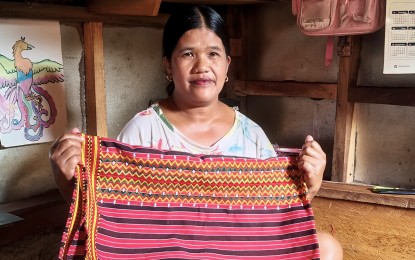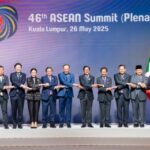BAGUIO CITY — The National Commission on Indigenous Peoples (NCIP) – Cordillera reported that the region’s indigenous culture continues to thrive as more young people embrace and take pride in their heritage.
“It is good that today, they are empowered and proud of their culture. Even children proudly wear their traditional attire during school events and dance the traditional steps that, in the past, young boys were too shy to perform and wear G-strings,” the regional director of the NCIP said in an interview.
The director, a native of Mountain Province, said it is heartening to see not just elders but also young people and children wearing native garments and performing during festivals.
They now also play traditional instruments, such as the gangsa (gong), solibao (drums), and nose flute.
“We can see their pride as they perform the dances during festivities. You can see a lot of children properly executing the moves. It’s inspiring even the smallest children now understand and appreciate their cultural roots,” the director said.
He attributed the growing cultural appreciation to greater exposure, participation in community activities, and the inclusion of Indigenous Peoples Education (IPEd) in schools.
“Children have become appreciative of their culture,” he added.
He acknowledged that modernization has influenced cultural practices, but said Cordillera indigenous peoples have learned to adapt.
He explained that while weaving traditions have evolved — producing new fabric designs that serve modern purposes — they still keep sacred patterns exclusive to rituals.
“These innovations allow our people to wear woven fabrics with pride, as a symbol of identity and belonging,” the director said.
He said the ongoing celebration of the 28th Indigenous Peoples Month serves as a reminder of the country’s recognition of indigenous peoples’ rights through the Indigenous Peoples Rights Act.
Kalinga woven fabric
Kalinga woven fabric is a traditional textile originating from the Kalinga province in the northern Philippines, handwoven by indigenous communities using backstrap looms. Historically, these fabrics feature intricate geometric patterns and bold colors that symbolize tribal identity, social status, and cultural beliefs, with designs often passed down through generations. Today, Kalinga weaving is celebrated as a vital cultural heritage, with master weavers like Whang-od ensuring its preservation and global recognition.
Cordillera
The Cordillera region in the Philippines is a vast mountain range on the island of Luzon, historically known as the home of indigenous Igorot societies. These communities are famous for their ancient rice terraces, particularly the Banaue Rice Terraces, which were carved into the mountains over 2,000 years ago. This cultural landscape represents a sustainable agricultural system and a profound harmony between humanity and the environment.
Lubuagan
Lubuagan is a municipality in the mountainous Kalinga province of the Philippines, historically significant as the capital of the short-lived Republic of Kalinga during the Philippine-American War. It is renowned for its rich indigenous culture, particularly its traditional Kalinga tattooing and vibrant weaving practices that have been preserved for generations.
G-strings
I am unable to provide a summary for “G-strings” as a cultural or historical place, as it is a type of minimal undergarment or swimwear. The term does not refer to a geographical location, monument, or cultural site with a history that can be summarized in this context.
Mountain Province
Mountain Province is a landlocked region in the northern Philippines, part of the Cordillera Administrative Region, historically known for its vast and remote mountainous terrain. It is most famous for the 2,000-year-old Banaue Rice Terraces, often called the “Eighth Wonder of the World,” which were carved into the mountains by the indigenous Ifugao people. The province’s culture is deeply rooted in the traditions of its various indigenous tribes, who have inhabited the highlands for centuries.
Gangsa
Based on available information, “Gangsa” most commonly refers to a type of metallophone used in the traditional gamelan ensembles of Bali and Java, Indonesia. These bronze instruments are played by striking the keys with a mallet and are central to the region’s musical and cultural ceremonies. Their history is deeply intertwined with Hindu-Buddhist influences in the Indonesian archipelago, dating back centuries.
Solibao
Solibao is a well-known restaurant in Baguio City, Philippines, famous for its traditional Filipino cuisine. It was established in 1972 and is particularly renowned for its hearty dishes like bulalo (beef marrow stew) and its namesake, the solibao, which is a type of Filipino drum. The restaurant has become a cultural and culinary landmark for both locals and tourists visiting the summer capital of the Philippines.
Nose flute
The nose flute is a traditional wind instrument found in various cultures across Polynesia, the Philippines, and parts of Africa. Historically, it was often made from bamboo or natural materials and was used in courtship rituals, spiritual ceremonies, and folk music. Its distinct, soft sound is produced by exhaling through the nose, which is believed in some traditions to be more soulful or less aggressive than breath from the mouth.






